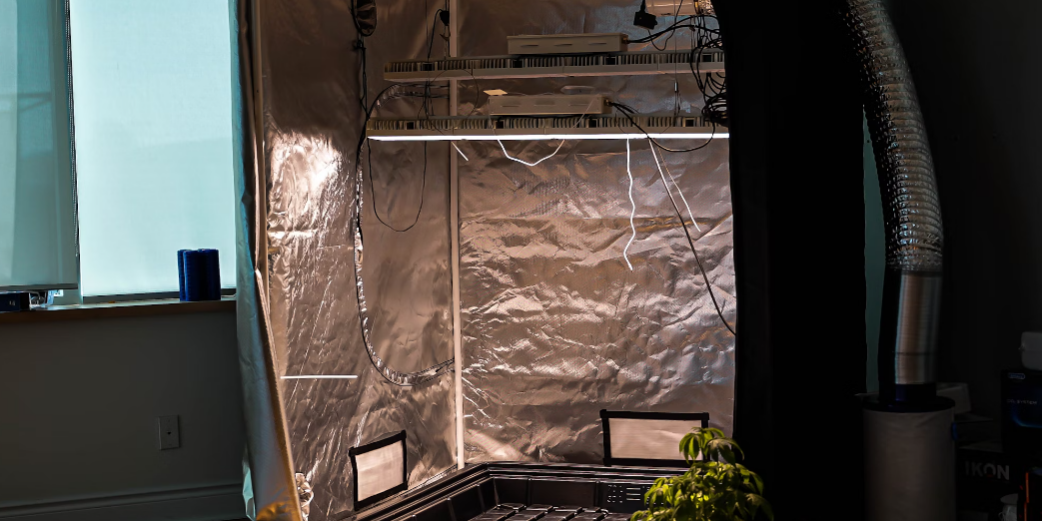Before you start growing, you’ll have to determine whether you want to grow indoors or outdoors. Cannabis can grow pretty much anywhere—its nickname “Weed” is well earned! It just depends what space, equipment, and resources you have available.
Outdoor Growing
If you choose to grow outdoors, MN state law requires you to grow “in an enclosed, locked space that is not open for public view.” You’ll need a full-sun location and maybe more importantly, a full-dark location or the means to block light pollution for photoperiod plants at night. Consider your neighborhood as well. Will your neighbors be tolerant of the smell of cannabis as it’s flowering? Will the fact that you’re growing it cause any problems for your relationship? Will your plants be in danger of being stolen or damaged? If anyone else is growing nearby, you have the potential for pollination and loss of harvest. Poor weather conditions, insects and early frost can also damage or destroy your outdoor crop.
Just like having the best chance with tomatoes in our short growing season, you’ll want to start seeds in March to transplant outdoors at the end of May. This will allow the plants to take advantage of the long days to complete their vegetative stage and start setting flowers when the daylight turns around at the summer solstice. This should give enough time to produce a yield before we get frosts again in September.
Container gardens allow plants to be moved around the garden to maximize sunlight or protect them from harsh conditions such as rain, heavy winds or extreme temperatures. Avoid clay pots because they can be costly, heavy and retain heat that could dry out the plant’s soil and roots. Fabric pots are the least expensive and most effective solution; they allow for ample drainage and plenty of oxygen to get to the roots. Plastic containers are also light and inexpensive but retain more heat than fabric pots. Flowering plants need containers that are at least 5 gallons to prevent them from becoming rootbound.
Planting directly into the ground or a raised bed requires a bit more preparation but has its benefits as well. Without a container to restrict growth, roots can grow deep and thick to support a strong plant. The added surface area also allows the plant to access a greater quantity of nutrients and water in the soil, compared with a container garden. The major downside is that the plants cannot be moved and could require additional structures to protect them in the case of extreme weather. Choose a spot in your garden that receives full sun during the day, but is also dark at night.
Quality soil should be dark, rich in nutrients and have a light and fluffy texture. The structure of your soil should be capable of retaining water but also allow for drainage of any excess. We carry several Fox Farms growing mixes and a variety of soil amendments if you’re creating or improving your own.
Indoor Growing
Growing indoors can allow you to protect your plants from nosy neighbors, bad weather, excess light, pollinators, thieves, etc. However, you’ll have more up-front cost to set up a growing space, including lights and timers, ventilation, tenting, planting medium, etc. Space will probably be more of a consideration as well.
We carry the Hort20 3’x3’ grow kit that includes a tent, ducting kit with inline fan and carbon filter, clip fan, LED grow light, rope ratchet, hygro thermometer, timer and wifi smart plug. There are a multitude of lists and instructions online for putting together your own DIY setup, as well.
We also have 5 gallon grow bags & pots, growing medium and fertilizers to help round out your Cannabis shopping list.




